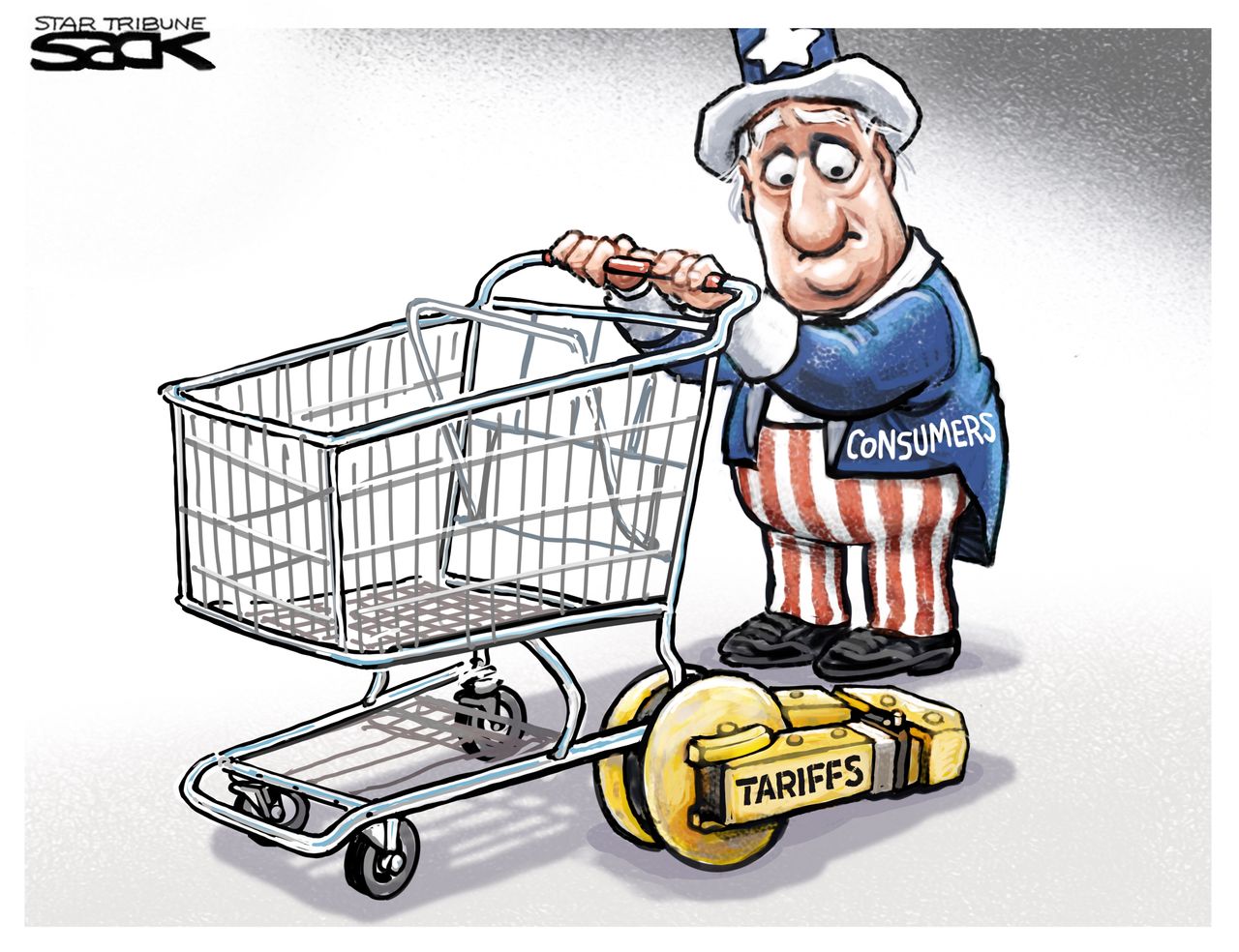The Trump Administration's 30% China Tariffs: A 2025 Outlook

Table of Contents
The Initial Impact of the 30% Tariffs
The implementation of the Trump Administration's 30% China tariffs immediately disrupted global trade and sent shockwaves through numerous sectors.
Disruption to Global Supply Chains
- Industries Affected: The tariffs significantly impacted electronics manufacturing, agriculture (soybeans, pork), and textiles. Many companies faced substantially higher input costs.
- Increased Costs: Consumers experienced increased prices for a wide range of goods, impacting their purchasing power and contributing to inflationary pressures. Businesses struggled with rising operational costs, forcing many to absorb losses or pass them on to consumers.
- Manufacturing Relocation: Faced with increased tariffs and uncertainty, numerous companies began shifting their manufacturing bases away from China to countries like Vietnam, Mexico, and India, leading to a restructuring of global supply chains. This relocation, while offering some diversification, also presented new logistical challenges and costs.
Retaliatory Tariffs from China
China responded swiftly to the US tariffs with its own retaliatory measures, imposing tariffs on various US goods. This tit-for-tat exchange intensified the trade war, impacting businesses on both sides.
- Impact on US Businesses: American agricultural exports, particularly soybeans, faced significant challenges in the Chinese market. Other industries exporting to China also experienced reduced sales and market share.
- Trade Deficit Shifts: While the initial goal was to reduce the US trade deficit with China, the effectiveness of the tariffs in achieving this goal is debatable. The trade deficit may have shifted, but its overall size remained a concern. Some argue that the tariffs simply shifted trade flows rather than significantly reducing the deficit.
Long-Term Economic Consequences (2025 Perspective)
The long-term economic consequences of the Trump Administration's 30% China tariffs are still unfolding in 2025, with several key factors continuing to shape the global economic landscape.
Inflationary Pressures
The tariffs contributed significantly to inflationary pressures, impacting consumer spending and economic growth.
- Ongoing Inflation: The increased costs of imported goods fueled inflation, reducing consumer purchasing power and impacting overall economic growth.
- Impact on Consumer Spending: Higher prices for everyday goods forced consumers to cut back on spending, negatively affecting demand and potentially leading to slower economic growth.
- Data & Statistics: (This section would benefit from incorporating relevant economic data and statistics from 2025, illustrating the persistent impact of the tariffs on inflation rates and consumer spending. Specific figures from reputable sources would strengthen this argument.)
Shift in Global Trade Dynamics
The tariffs significantly reshaped global trade dynamics, forcing both the US and China to seek alternative trade partners.
- Reshaping of Trade Relationships: The trade war accelerated a diversification of trade relationships, reducing reliance on the US-China bilateral relationship for many countries.
- Rise of Alternative Partners: Countries like Vietnam, India, and Mexico saw increased investment and manufacturing activity as companies sought to circumvent the tariffs.
- Impact on Multilateral Trade Agreements: The trade war highlighted the challenges of maintaining a multilateral trading system and raised concerns about the future of international trade cooperation.
Impact on Specific Industries
The long-term impact on specific industries varied significantly, with some adapting more successfully than others.
- Agriculture: The US agricultural sector faced significant challenges, particularly in exporting soybeans to China. Farmers had to adapt to reduced demand and explore new markets. (Case studies could be included here, showing specific farm adaptations and resulting economic outcomes).
- Technology: The technology sector experienced complex impacts, with some companies benefiting from shifting manufacturing, while others faced increased costs for components. (Specific examples of successful adaptation and significant losses should be included, supported by relevant data).
- Job Creation and Losses: (Data on job creation and losses in different sectors due to the tariffs would provide crucial context and strengthen the argument).
Geopolitical Implications
The Trump Administration's 30% China tariffs had profound geopolitical implications, significantly straining US-China relations and impacting global governance.
Strained US-China Relations
The trade war exacerbated existing tensions between the US and China, impacting political alliances and global power dynamics.
- Long-Term Impact: The tariffs created a climate of mistrust and antagonism, impacting broader diplomatic efforts and cooperation on other global issues.
- Political Alliances: The trade war forced countries to choose sides, impacting alliances and the balance of global power.
- Diplomatic Efforts: (Mention specific diplomatic efforts made to resolve trade disputes, their success rates and the overall atmosphere in US-China relations).
Impact on Global Governance
The trade war challenged the effectiveness of existing international institutions and governance structures.
- Influence on International Institutions: The trade war demonstrated the limitations of WTO mechanisms in resolving major trade disputes.
- Future Trade Negotiations: The experience of the trade war has shaped the approach to future trade negotiations, influencing the emphasis on bilateral agreements versus multilateral ones.
Conclusion: The Trump Administration's 30% China Tariffs: A Lasting Legacy in 2025
The Trump Administration's 30% China tariffs have left a lasting legacy on the global economy and geopolitical landscape in 2025. The initial disruption to supply chains, coupled with retaliatory tariffs, led to increased inflation, reshaped global trade dynamics, and strained US-China relations. The long-term consequences continue to unfold, with specific industries experiencing varied impacts and the future of international trade cooperation remaining uncertain.
The enduring impact of these tariffs underscores the complexity of trade policy and the need for carefully considered approaches to managing international trade relations. Further research into the ongoing impact of the Trump Administration's 30% China Tariffs and its evolving consequences in 2025 and beyond is crucial. We encourage readers to delve deeper into the future of US-China trade relations and the ongoing adjustments to the global economic order shaped by these significant policy decisions.

Featured Posts
-
 Ubers Resilience Analyzing The Stocks Recession Resistance
May 19, 2025
Ubers Resilience Analyzing The Stocks Recession Resistance
May 19, 2025 -
 The Man Who Saved The Jersey Battle Of Flowers
May 19, 2025
The Man Who Saved The Jersey Battle Of Flowers
May 19, 2025 -
 One Result Bothered Gilbert Burns More Than His Losses To Chimaev Della Maddalena And Muhammad
May 19, 2025
One Result Bothered Gilbert Burns More Than His Losses To Chimaev Della Maddalena And Muhammad
May 19, 2025 -
 Chat Gpt Rumors Unveiling The Truth About Its Release Date Features And Price
May 19, 2025
Chat Gpt Rumors Unveiling The Truth About Its Release Date Features And Price
May 19, 2025 -
 A Place In The Sun Practical Advice For Buying Abroad
May 19, 2025
A Place In The Sun Practical Advice For Buying Abroad
May 19, 2025
